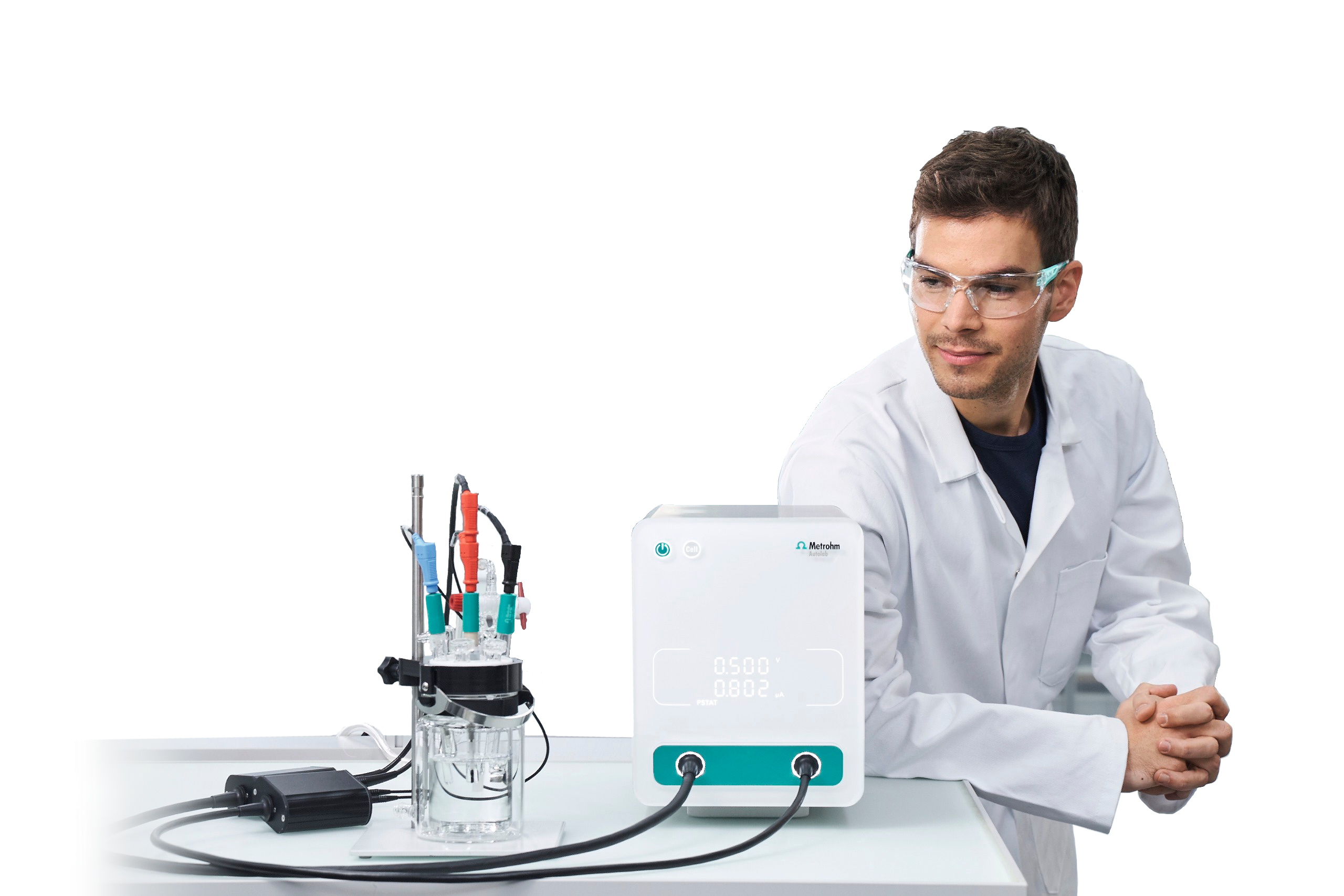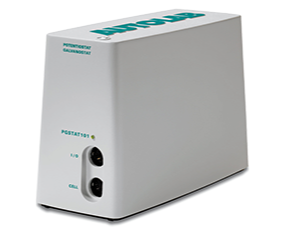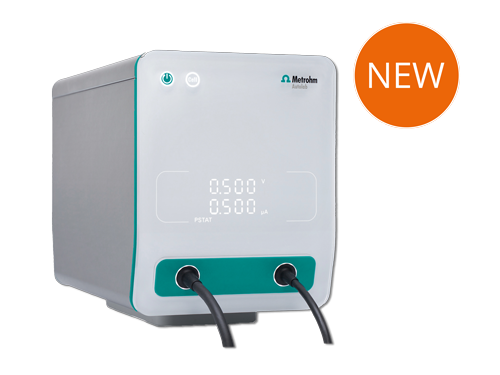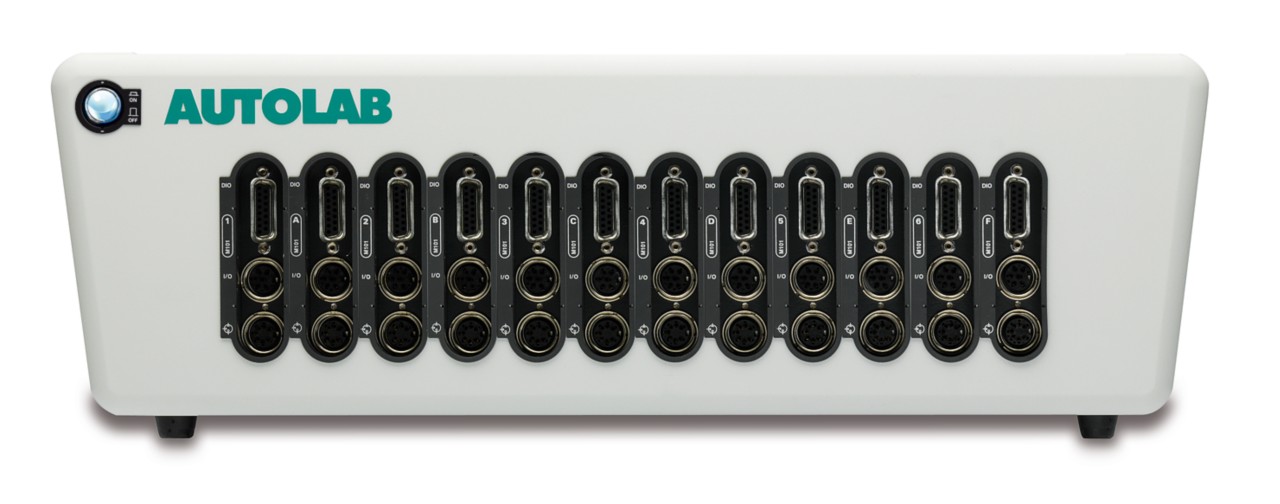
Potentiostats and galvanostats for research and industry: Here’s where the electrochemistry is just right
See how to benefit from long-lasting instruments and unique services for your battery research, corrosion studies and many other electrochemical applications

In electrochemical research, people with a passion for experimentation have to cope with demanding materials and measurement requirements. Such challenges can only be met when using high-quality, reliable potentiostats and galvanostats. This is why Metrohm has developed the two product lines Autolab and DropSens to accomplish any electrochemical task – from sensor applications to routine measurements and complex research. But not only quality and longevity of the instruments matter to us, the human factor does as well: our service and support staff will help you swiftly and with all their specialist knowledge to find a solution for your individual challenge. This saves you time, allows you to rely on getting quick solutions and to acquire valuable know-how. You’ll be truly electrified!
From routine measurements to highly complex experimental setups:
Metrohm can provide the right potentiostat/galvanostat
Mini Line
PROMOTION: starts at 2,300 € *
Up to max. ± 40 mA | ± 4 V
- Portable DropSens potentiostats
- Perfect for measurements in sensor technology
- Equipped with a lithium ion battery
- USB and Bluetooth interfaces
- Impedance spectroscopy optional

Compact Line
Max. ± 400 mA | ± 10 V
(Optional: +/- 10 A)
- Affordable instruments for most basic applications in electrochemistry
- Small enough to carry anywhere in the lab
- Impedance spectroscopy included

Our most powerful potentiostat:
VIONIC powered by INTELLO
Max. ± 6000 mA | ± 50 V
- Impedance spectroscopy up to 10 MHz
- Analog voltage generator included
- Intelligent safety functions
- Network capable, stores 10 million data points
- Ideal for electrolysis and electrosynthesis

Multichannel Line
Max. ± 400 mA | ± 10 V
(Optional: +/- 10 A)
- Synchronized measurement in up to 12 single cells
- Simultaneous use by up to three separate users or computers
- Ideal for battery research
- Impedance spectroscopy included

Select Metrohm Autolab for an all-round carefree package with many advantages:
- Save time and hassle: Quick service and free phone support
- Save maintenance costs: Three-year warranty on all instruments
- Acquire know-how: Wide range of training courses, seminars and free application notes
- Evaluate results anywhere: NOVA software can be installed on any number of computers
- Planning long-term: Ten years of continued maintenance and service available even for discontinued products
Metrohm potentiostats and galvanostats let you succeed with any application:
- Determination of the lithium ion transference number of battery electrolytes (download Application Note)
- Galvanostatic charging and discharging of a lithium ion battery (constant current, constant voltage)
- Electrochemical corrosion studies (Tafel analysis, breakthrough an depassivation potential, polarization resistance)
- Potentiostatic and galvanostatic intermittent titration techniques (PITT/GITT)
- Electrochemical impedance spectroscopy
- Quality assessment of battery separator membranes
- (Bio-)Sensor measurements (point-of-care virus detection with electrochemical testing)
For each of these applications and dozens more, we have created separate Application Notes. You’re interested in one of the application fields or have questions about an application not mentioned here? Let us know which one interests you and you’ll receive the right Application Note for free.

How to determine the lithium ion transference number of a battery electrolyte by impedance spectroscopy (VLF-EIS)
Lithium ion batteries are currently the most important electrochemical energy storage devices on the market. This Application Note demonstrates how to determine the lithium ion transference number of a commercial liquid binary lithium ion battery electrolyte based on very-low-frequency electrochemical impedance spectroscopy (VLF-EIS). Download the Application Note now for free.
© Metrohm Deutschland 2025 | Imprint | Privacy Policy